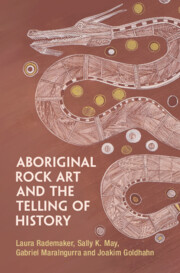Book contents
- Aboriginal Rock Art and the Telling of History
- Aboriginal Rock Art and the Telling of History
- Copyright page
- Dedication
- Contents
- Figures
- Foreword
- Acknowledgements
- Note on the Text
- Abbreviations
- Chapter 1 Rock Beats Paper
- Chapter 2 Change and Tradition in West Arnhem Land Rock Art
- Chapter 3 The Counter-Archive of First Nations Biography
- Chapter 4 Reading the Writing on the Wall
- Chapter 5 Touchstones for Memory, Bedrocks for History
- Chapter 6 Timelessness and Permanence
- Conclusions
- Afterword
- Glossary
- Bibliography
- Index
Chapter 4 - Reading the Writing on the Wall
Rock Art and the Written Word
Published online by Cambridge University Press: 12 November 2024
- Aboriginal Rock Art and the Telling of History
- Aboriginal Rock Art and the Telling of History
- Copyright page
- Dedication
- Contents
- Figures
- Foreword
- Acknowledgements
- Note on the Text
- Abbreviations
- Chapter 1 Rock Beats Paper
- Chapter 2 Change and Tradition in West Arnhem Land Rock Art
- Chapter 3 The Counter-Archive of First Nations Biography
- Chapter 4 Reading the Writing on the Wall
- Chapter 5 Touchstones for Memory, Bedrocks for History
- Chapter 6 Timelessness and Permanence
- Conclusions
- Afterword
- Glossary
- Bibliography
- Index
Summary
This chapter reveals how Aboriginal people adopted and integrated alphabetic script into their art, recognising the potential of this kind of knowledge transmission and blurring the categories imposed on their pasts. Focusing on the biography of artist Narlim, we reveal how he integrated alphabetic script into his art at times, experimenting with different forms of communication.
- Type
- Chapter
- Information
- Aboriginal Art and the Telling of History , pp. 71 - 102Publisher: Cambridge University PressPrint publication year: 2024

